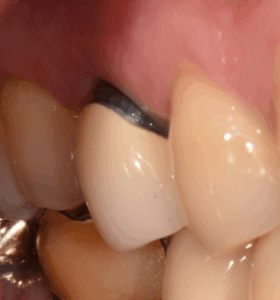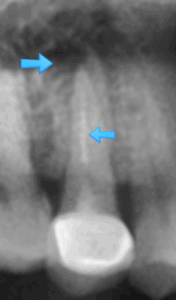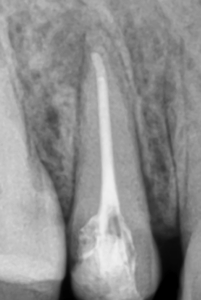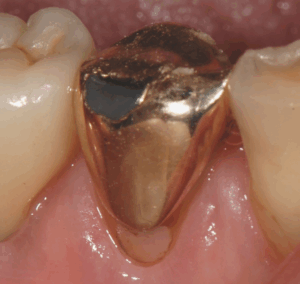Why Regular Crown Check-ups Matter: A Patient Story

Recently, a patient came to see us with pain in a tooth that had been treated at another clinic many years ago. Let me walk you through what we found and why it’s important for everyone with dental crowns to pay attention to their condition.
What We Discovered
-
Darkened Root: When we examined the tooth, we noticed that the root looked darker than usual. This can be an early sign that something isn’t right beneath the surface.
-
X-ray Results: The X-ray showed inflammation at the tip of the root, which usually means there’s an infection.

-
CT Scan Findings: A closer look with a CT scan revealed that only one of the root canals had been treated, and the other canal was missed entirely. This is called a “missing canal,” and it can allow infection to persist or return.
How Did This Happen?
Even though the root canal treatment wasn’t perfect, the patient didn’t have major issues for a long time. But over time, decay developed around the crown, allowing bacteria to get in and cause a new infection.
This is a common situation. Many people know that a good root canal is important, but it’s easy to overlook the condition of the crown itself. If the crown becomes damaged or doesn’t fit well anymore, bacteria can sneak in and cause new problems—even if the original root canal was done well.
What We Did
-
Retreatment: We carefully retreated the tooth, making sure to clean and fill all the canals properly this time.
-
New Crown: Once the infection was gone and the tooth felt better, we placed a new crown to protect it.

You might notice on the X-ray that the white lines (which show the root canal fillings) are now different thicknesses. That’s because we made sure to treat all the canals thoroughly.
What Should Patients Know?
-
Be Careful with Hard Foods: Because the decay had progressed quite a bit, the tooth isn’t as strong as it once was. We advised the patient to avoid very hard foods to prevent any damage.
-
Don’t Wait for Pain: If you notice any issues with your crown—like a hole, looseness, or decay around the edges—it’s best to get it checked and possibly replaced before pain starts. Waiting can make the problem worse and lead to more complicated treatment.

When Should You Replace a Crown?
-
If you see a hole or crack in your crown
-
If you notice decay or dark lines around the edges
-
If your crown feels loose or doesn’t fit like it used to
Remember, the main job of a crown is to protect your tooth. If it’s not doing that, replacing it at the right time can save you from pain and bigger dental problems down the road.
Takeaway:
Regular dental check-ups and paying attention to your crowns can help keep your teeth healthy for years to come. If you have any concerns about your crown or root canal, don’t hesitate to ask!
👨⚕️ Lead Dentist: Dr. Sungwook Ha
- DDS, Seoul National University (With honors)
- Residency in Advanced General Dentistry, Yonsei University Dental Hospital
- Former Clinical Instructor at Yonsei University
- Certified Specialist in Advanced General Dentistry
- Member of AAID (American Academy of Implant Dentistry)
Seoul Prime Dental Clinic
Sangilro 6gil 26, Samsung GEC, Kangdong-gu, Seoul, Korea
Text message(10am-06pm): 02-442-3228
#rootcanals #retreatment